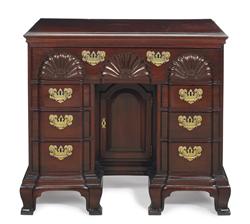Art
Art is a term used to describe objects or ideas that are creative in origin or design. It is typically defined as the conscious production or arrangement of sounds, colors, forms, movements, or other elements in a manner that affects the sense of beauty, specifically the production of the beautiful in a graphic or plastic medium.[1]
The arts is a term broader than "art", which usually means the visual arts (fine art and decorative art). The arts encompasses visual arts, performing arts (Music and dance), language arts (Literature) and culinary arts. The major general surveys on topics in the fine arts are painting, sculpture, drawing, photography and architecture.
Liberalism and art
Liberals use art to express their political views, hoping to gain extra protection for their political speech by claiming that it is not really political but merely "artistic expression". This has been used to defend hate speech in the case of an art exhibit in the 1980s which invited museum goers to step on an American Flag and then record their opinions in a journal.
In 2008, visual artist Shepard Fairey utilized Socialist and Communist propaganda poster aesthetics to create the infamous Barack Obama "HOPE" campaign poster. Fairey's work has long employed visual elements directly referencing fascist imagery, styling and color palettes. His representation of Obama bore striking resemblance to socialist realism and recalled posters used to promote Mao, Stalin and Lenin. This iconographic image became synonymous with Obama's presidential campaign, despite claims by the Associated Press that Fairey had illegally stolen the original image from their photo archives. In a September 2008 article on San Francisco-based news website SF Gate, Fairey admitted freely that he employed propaganda techniques, saying, "The illustration does have roots in propaganda art... I also want it to seem like a patriotic image, but not be seen as too countercultural... It needed just enough mainstream ingredients to transcend."[2]
Aside from the propaganda elements, liberals, in particular Susan Sontag, also desecrated the concept of art during the 1960s, where they left beauty as the sole guiding principal of art, with "beauty" in this case being the pleasure one received from hearing or viewing a piece, derived from 19th century Aestheticism. There's also ample evidence that she overturned Matthew Arnold's culture-based viewing of art, sought to eliminate the notion of art being influenced by morality in favor of nihilism, and had caused the demise of New York's intellectual elite with her views.[3]
See also
The secret of art is love. — Emile Antoine Bourdelle (1861-1929), French sculptor, studied with Rodin[4]
- Art movements
- Art history
- Painting Schools
- Painting Galleries
- Aesthetics
- Bible Art Gallery
- Masterpiece
- Atheist art
Books
- Understanding Art by Lois Fichner-Rathus, Cengage Learning; 11th edition (January 1, 2016)
- How To Understand Art (Art Essentials) by Janetta Rebold Benton, Thames & Hudson (October 26, 2021)
- Foundations of Art and Design by Lois Fichner-Rathus, Wadsworth Publishing; 1st edition (February 16, 2007)
External links
- National Arts Education
- The Arts U. S. Life, Culture and History.
- Academic Art Artcyclopedia.
- Best Graduate Schools - Fine Arts Ranked in 2008.
- Art Gallery. Kevin Alfred Strom.

References
- ↑ American Heritage Dictionary
- ↑ http://articles.sfgate.com/2008-09-18/entertainment/17159255_1_shepard-fairey-poster-street-artist
- ↑ https://pjmedia.com/lifestyle/2013/11/29/sontags-kulture-kamp/
- ↑ WordSpingle.com
| |||||||||||



